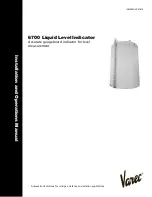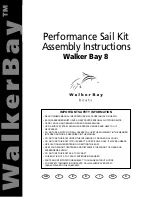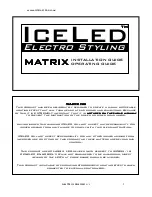
48
Occupant Safety
Chemical Sensitivity & Outgassing
When you first purchase your new RV, or after it has been
closed for an extended time, you may notice a chemical odor
due to outgassing. This is normal, and not a defect.
Outgassing
(or
offgassing
) is the release of a chemical gas
that was dissolved, trapped, frozen or absorbed in a material.
The amounts released through outgassing decrease over time.
Just like in your home, RV construction uses many products
such as carpet, linoleum, plywood, insulation, upholstery, etc.
These new products may outgas different chemicals, including
formaldehyde. This can continue over time, and in particular,
when exposed to elevated temperatures or humidity.
Because RVs are smaller than a home, the exchange of air
inside your RV is much less. The minimal air exchange, can
make the outgassed chemicals more noticeable.
Chemical sensitivity
may cause you to experience irritation of
the eyes, nose, and throat and sometimes headache, nausea,
and a variety of asthma-like symptoms. Elderly persons, young
children, or anyone with a history of asthma, allergies or lung
problems, may be more susceptible to the effects of outgassing.
Formaldehyde
Most of the attention regarding chemical outgassing surrounds
formaldehyde. Some people are very sensitive to formaldehyde
exposure while others may have no reaction.
Formaldehyde is a naturally occurring substance. It is a key
industrial chemical used in the manufacture of numerous con-
sumer goods including products used in RV construction. Trace
levels of formaldehyde are also released from smoking, cook-
ing, and the use of many other household products like deter-
gents, cleaners, paints, coatings and cosmetics.
California Air Resource Board (CARB) Notice
Formaldehyde is used widely in building materials such as
pressed wood products, particleboard, hardwood plywood pan-
eling, medium density fiberboard (MDF), and plywood which are
commonly used throughout the Recreational Vehicle Industry.
As mandated by the RV Industry, Grand Design RV recreation
vehicles contain composite wood products (hardwood plywood,
particle board, and MDF) that comply with the California Air Re-
source Board (CARB) formaldehyde emission standards under
California Code of Regulations § 93120.2(a) Phase 2 (P2).
If you have any
questions regarding
the health effects
of formaldehyde or
other air pollutants, consult
your doctor or local health
department.
Summary of Contents for Solitude 2017
Page 1: ......
Page 2: ......
Page 4: ...This page is intentionally blank ...
Page 6: ...This page is intentionally blank ...
Page 34: ...32 This page is intentionally blank ...
Page 81: ...79 This page is intentionally blank ...
Page 116: ...114 This page is intentionally blank ...
Page 117: ...115 Nautilus P1 Manual Nautilus P1 Manual ...
Page 118: ...116 Nautilus P1 Manual ...
Page 119: ...117 Nautilus P1 Manual ...
Page 120: ...118 Nautilus P1 Manual ...
Page 121: ...119 Nautilus P1 Manual ...
Page 122: ...120 Nautilus P1 Manual ...
Page 123: ...121 Nautilus P1 Manual ...
Page 124: ...122 Nautilus P1 Manual ...
Page 125: ...123 Nautilus P1 Manual ...
Page 126: ...124 Nautilus P1 Manual ...
Page 127: ...125 Nautilus P1 Manual ...
Page 128: ...126 Nautilus P1 Manual ...
Page 129: ...127 Nautilus P1 Manual ...
Page 130: ...128 Nautilus P1 Manual ...
Page 131: ...129 Nautilus P1 Manual ...
Page 132: ...130 This page is intentionally blank ...
Page 151: ...149 Heating Cooling ...
Page 202: ...200 Customer Notes ...
Page 203: ......
















































